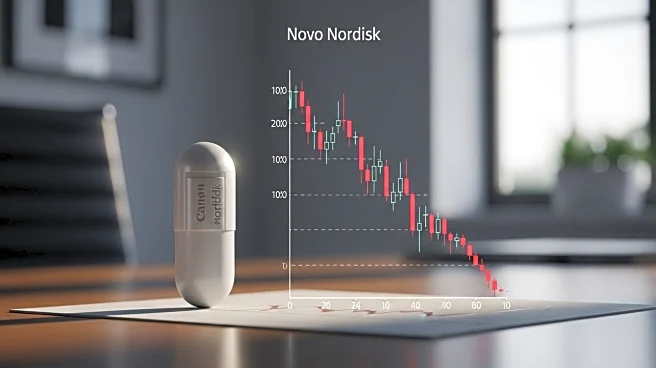What's Happening?
Viking Therapeutics is experiencing significant stock underperformance, with a 58% decline over the past year, despite promising clinical results from its lead candidate, VK2735. This dual GLP-1/GIP agonist has shown potential in Phase II trials, achieving notable weight loss metrics. However, the drug's commercial viability is questioned due to tolerability issues, including a high discontinuation rate from gastrointestinal side effects. The injectable version of VK2735, which has a better safety profile, is currently in Phase III trials, with results anticipated by late 2026. Viking's stock is trading at a premium despite its underperformance, reflecting investor skepticism about its ability to compete against industry giants like Eli Lilly and Novo Nordisk.
Why It's Important?
The outcome of Viking Therapeutics' Phase III trials is crucial for its future in the competitive obesity treatment market. Success could allow Viking to capture a significant market share, potentially generating billions in annual revenue. However, the company faces strategic risks due to its reliance on a single asset and the need to differentiate itself in a market dominated by established players. The broader GLP-1/GIP market is influencing economic trends, including healthcare cost inflation and changes in consumer spending. Viking's ability to navigate these challenges will determine its long-term viability and impact on the biotech sector.
What's Next?
Viking Therapeutics is focused on completing its Phase III trials for VK2735, which are critical for its market entry and potential revenue generation. The company must address the drug's tolerability issues to improve patient adherence and compete effectively. Investors and stakeholders will closely monitor trial outcomes and Viking's strategic moves, including potential partnerships or acquisitions, to enhance its competitive position.
Beyond the Headlines
Viking Therapeutics' situation highlights the broader challenges faced by biotech firms in balancing clinical innovation with market realities. The company's reliance on a single drug underscores the importance of pipeline diversification in mitigating risks. Additionally, the competitive landscape in the GLP-1/GIP market reflects the growing influence of large pharmaceutical companies in shaping industry dynamics and consumer health trends.











